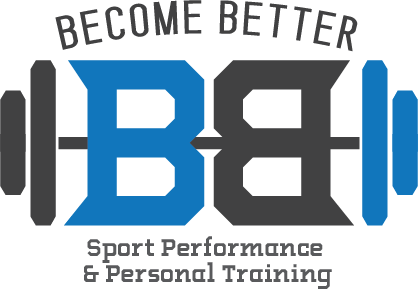Letting your Trainer know of those “Aches and Pains”
When a client comes in to the gym for an assessment or trial workout, we as trainers like to know of any previous history about the client's body that may cause some sort of “ache or pain”. That being said, sometimes you as the client don’t even know of any issue until you start to perform some of the basic functional movements (ie.) squats, overhead press, deadlift, pushing or pulling. This is where it is critical to let your trainer/strength coach know of these issues. They could be related to poor functional movement over a long period of time or lack of strength but could also have occured during previous training or from just plain overuse. Through this article we will explain why letting your trainers/coaches know of these issues is not only important to us but also to you in an effort to help you feel and move better on a daily basis.
Is your pain due to poor mobility?
Whether you know of any aches and pains or find out during training, there is a good case to be made that it is from poor functional movement on a daily basis. This is generally from the type of work the average individual does and can usually be found out after an initial movement screen. Most work days are done by sitting for prolonged period of time or never getting off of their feet. When this is done, the proper musculature used on a daily basis “turns off” or isn’t activated properly. While in a seated or constant position for a prolonged period the glutes or “butt muscles” turn off. The glutes are a pivotal component to aches and pains in the hips, knees, and most cases the low back. The glutes turning off cause the extensors in the low back and lumbar spine to compensate and overwork using them for incorrect function. Glute and other muscle dysfunction can easily be corrected during a proper warm up and built strength programing that we at become better incorporate in all systems.
Why it is Still Important to Train if there is an “Ache or Pain”
What gets tough are those injuries that have occured from previous training or simply overuse. The overuse can also relate to the previous paragraph with improper functional movement. Everyone is not perfect when they come into the gym. It is a safe bet that just about everyone has partially torn some soft tissue over their lives from daily activity and this is no reason to stop or reduce your training. If anything it is even more important to get in the gym to “Train”. One of the best ways to help the pain or injured area is to strengthen all the structures around it. This can only be done by getting in and continuing to train. For example, a rotator cuff can be torn and surgery can be inevitable but there are countless numbers of other muscles/soft tissue in the shoulder girdle and shoulder blades that can be strengthened and activated to potentially speed up the recovery process and build a strong healthy shoulder once again. Think about it like this, if your physical therapist will put you through these exercises post surgery to help recover and gain strength/range of motion and get back to normal health, why not do these on an everyday basis.
Another aspect to training with aches and pains is that just because one exercise may cause an issue does not mean that all will. This point goes back to our previous article in removing or changing exercises based on any issue that could arise. If you back squat and feel pain but do not feel any pain performing a reverse lunge, then do your best to train that reverse lunge on a normal basis. If you feel pain during a barbell overhead press but do not feel any pain during a single arm dumbbell overhead press, then train that movement pattern. The point to this section is that exercises can be altered or modified to meet the same needs and to get the same output as other movements that are thought to be the most beneficial. Chances are that if you tell your strength coaches about the issue we can find a way to make the training work and help you receive the same benefit you expect when coming to us.
Conclusion
When you come into gym and tell a trainer why you are there or goals you want to achieve, it is equally important to mention or talk about any potential aches and pains. Programs can be built to gain strength, mobility and stability in the surrounding area which can then be translated to overall strength as the training continues. Injuries can be a pain (pun intended), but there is a way around them to become better and achieve the benefits that you came in looking for. Look to our next blog article on how training when having “aches and pains” can be beneficial to your rehab process and recovery post treatment/surgery.

